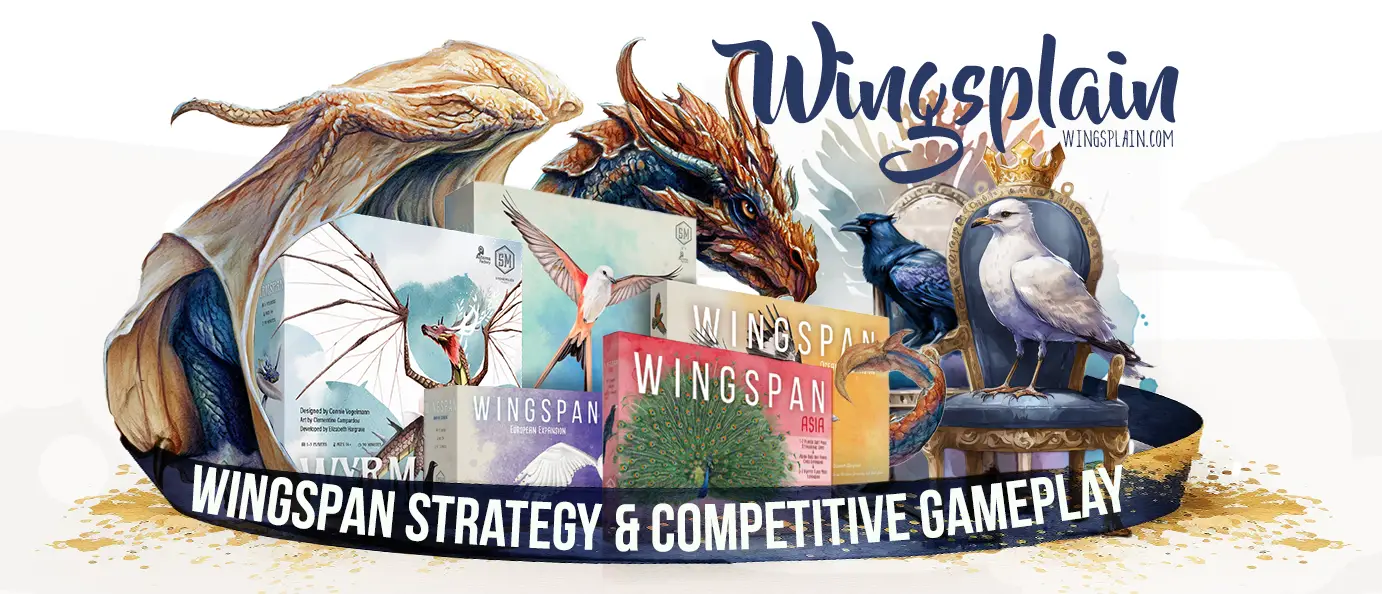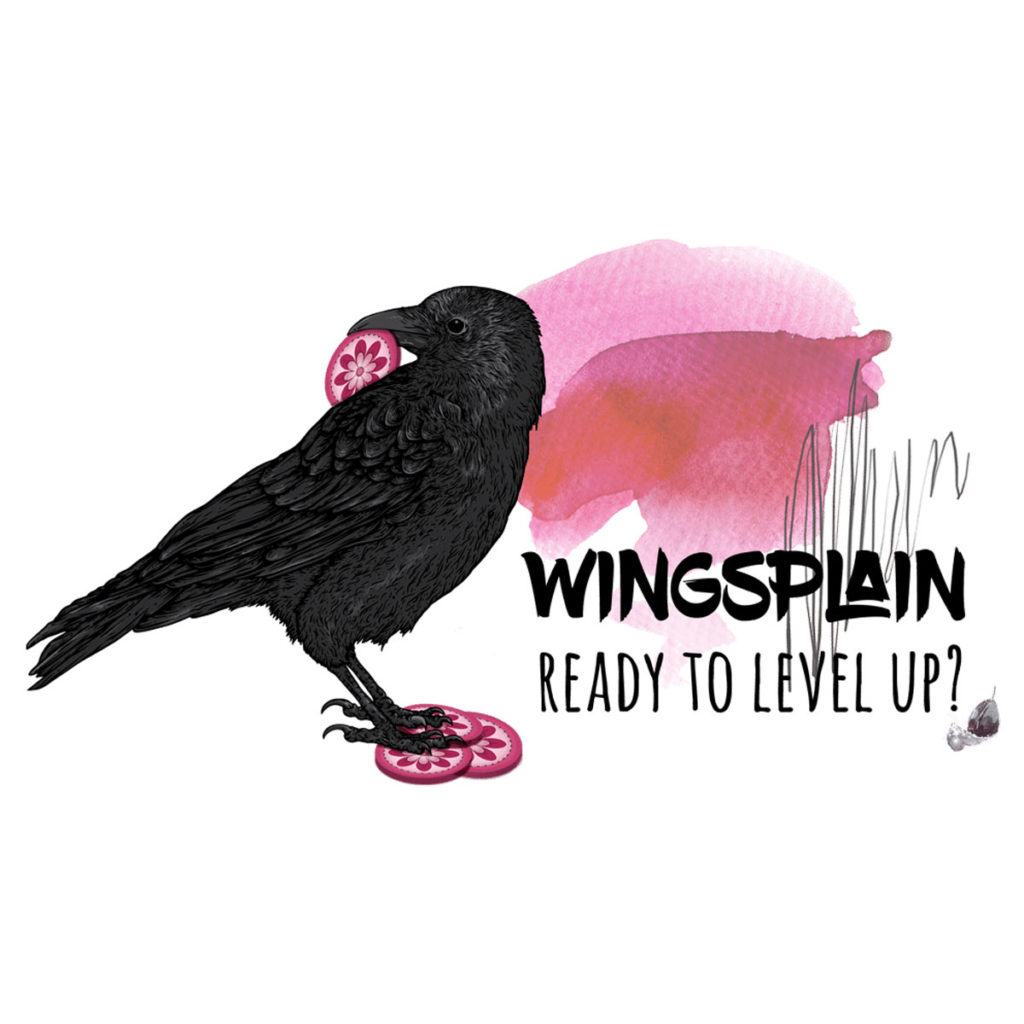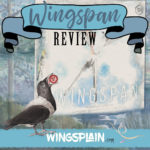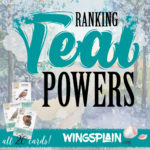Wingspan Card Drawing Strategy
A Wingspan card drawing gambit involves keeping a single card drawing bird from your opening hand and four pieces of food. I’ve used this strategy on multiple occasions with much success.
- Play the card drawing bird.
- Dig for a food-producing forest bird through the Draw Cards action.
- Once this bird is drawn, you have the food to play it. It is a strategy that I have used on multiple occasions.
- You are getting more food from your Gain Food Action, and you have the option to discard a low-impact card for the third piece of food from the second column of the core set mat.
Drawing cards in Wingspan can be a risky affair if done in small quantities. The highest-scoring games have one major component in common: they are able to draw large volumes of cards and capitalize on the best options faster than their opponents. Sustainable card advantage often results in the ability to employ better cards sooner than opponents who don’t have access to the same effects.
I employ a card drawing gambit when I don’t like my opening hand and I am presented with a card drawing bird of some type. It’s a risky play (a gambit), as you are at the mercy of the deck, but you are relying on superior card advantage to overcome the risk and see high-impact cards before your opponents.
I’ve found that an early draw gambit is better than a “food gambit” by comparison, that is, playing a bird or two into the Forest and then relying on single card draws as your sole solution to future plays. It ends up being more productive to leverage a small amount of food against many card options than it is to leverage a small number of card options against a large amount of food.
Card quality varies from card to card, but food is always food. A worm is always a worm, and each trip to the bird feeder doesn’t offer you the hope that the next worm is better than the last one. Furthermore, two of any food equals any one food, so “lower quality” options, such as fish and rats, can be employed despite a stubborn bird feeder.
“Lower quality” cards are much harder to employ effectively for the purposes of a game win because those cards might be worth a low point value, their powers produce less desirable effects, and/, or the birds produce less positive interactions with bonus cards/round bonuses, all resulting in fewer points by game end.
Excess food can’t be converted into card advantage (unless you are discarding nectar in the Oceania Wetlands or employing Kelp Gull). Conversely, excess cards can be converted into food options through the Forest bonus conversions.
What Are the Best Card Drawing Birds in Wingspan?
Some of the best card drawing powers can be found on birds from the Ruddy Duck archetype. These birds work best when played in the Wetlands (note that Wood Duck can be played in the Forest). Their power draws two cards and forces you to discard one at the end of your turn. On their own, these birds let you see a larger volume of cards for a minimal investment of a single bird.
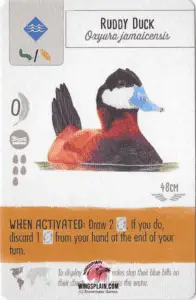
Birds such as White-Throated Dipper, White Stork, or Black-throated Diver, introduced in the European Expansion, break the mold of what card drawing birds could do in Wingspan. You get to cycle out the cards in the tray and pick one from the refreshed tray.
These birds don’t produce quite the same amount of card volume as Ruddy Duck, but they produce a lot higher card quality by letting you cycle through larger volumes of cards in a shorter period of time. Played as an early draw gambit, these birds will be a boon to all players, so be aware that they can help your opponents too by keeping the tray fresh. If you managed to get another card drawing bird behind these, you could scoop up most or all of the new birds that are revealed.
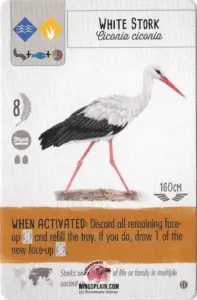
Tuck/Lay birds can be used for a Wingspan card drawing strategy in the Wetlands, discarding one of their eggs to draw a second card from the bonus conversions on the mat. I have found that these are harder to employ because they consume cards without replacing them, resulting in less card advantage. Nevertheless, I have made this work.
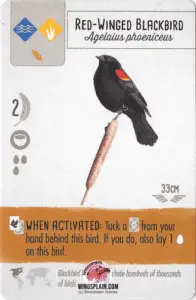
Franklin’s Gull and Killdeer can start a Grasslands-based card draw gambit. Early game egg spam is usually a sub-optimal choice because its effectiveness is directly related to your available nest space, which is limited in the earliest stages of the game.
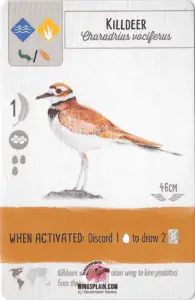
However, there are occasions where the right combination of nests and round bonuses merit early game egg spam. Backing up Gull/Deer with a cheap Tuck/Draw bird, such as a Barn Swallow, can compound card advantage by cycling low-impact cards into points and additional cards.
Furthermore, it goes without saying that Tuck/Draw birds are very effective in the Wetlands, where they receive the fuel for their power in large quantities.
Wood Duck on its own in the Forest is OK, but it can be awkward to employ effectively due to its higher food cost (less of an issue with Oceania starting nectar) and its net gain of only one card. A Wood Duck plus Grey Catbird or Northern Mockingbird, on the other hand, is a much more compelling and effective (and expensive) Forest-based draw gambit.
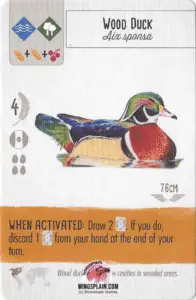
What Birds Pair Well with Card Drawing Powers in Wingspan?
The Tuck to Play birds such as Bonelli’s Eagle ignore food costs and convert excess cards into big point plays. This is ideal for food-starved Wetlands engines.
Ruff is another bird that passively benefits from consuming low-impact cards and potentially recycles them into higher impact options.
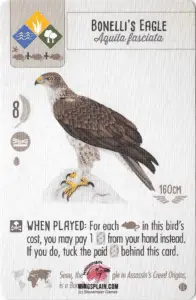
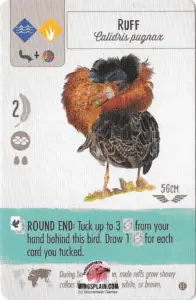
This video showcases an example of a particularly risky draw gambit, where I employ an expensive Purple Gallinule to draw into the components of a solid Forest engine:
